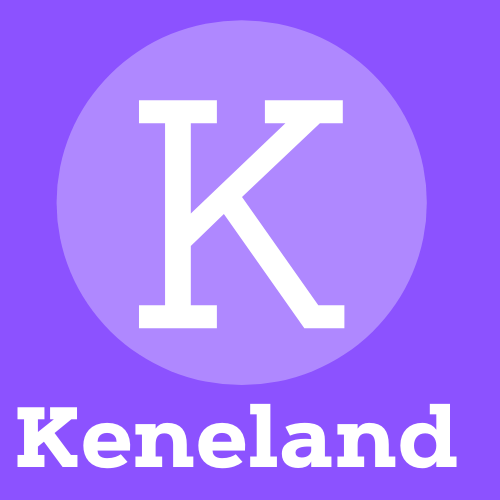
Tracking business goals can be a complicated task. Luckily, Salesforce dashboards are here to make it easier. These dashboards turn data into easy-to-read visuals that help you follow your goals promptly.
Salesforce dashboards are all about providing a clear view of how your business is doing at a glance. With real-time updates, you can see your sales, customer interactions, and other important metrics instantly. This means you can make smart decisions quickly to keep your business on track.
Using Salesforce dashboards isn’t just about pretty charts and graphs. They’re powerful tools that let you compare your current performance against your targets. With the right dashboards in place, you can spot trends, seize opportunities, and address challenges swiftly. Taking advantage of this feature can significantly boost your chances of hitting business targets effectively.
Understanding Salesforce Dashboards and Their Benefits
Salesforce dashboards are visual display tools that present business data quickly and clearly. They collect data from different sources within Salesforce and display it through charts, graphs, and tables. This visual approach helps teams understand complex data without digging through endless spreadsheets.
One of the biggest benefits of using dashboards is their ability to track business goals effectively. They break down your business objectives into measurable pieces, letting you see how your teams are performing. You can quickly identify what’s working and what needs improvement. Dashboards also help in setting realistic goals based on current data trends.
Dashboards provide real-time insights, crucial for making informed decisions quickly. The data refreshes automatically, offering an up-to-date picture of your business operations. For example, sales managers can immediately spot new sales leads and react fast to changing market conditions. Real-time insights also allow you to address potential issues before they escalate, ensuring smoother business processes.
Dashboards are more than just tools; they’re strategic assets. They transform raw data into easy-to-understand visuals, providing a clear path to achieving business goals. By offering instant clarity, they equip you to drive your business forward confidently and efficiently.
Setting Up Effective Dashboards
Creating a dashboard in Salesforce involves several steps, ensuring it’s effective and tailored to your needs. Here’s a simple guide to help you set up effective dashboards:
1. Access Dashboard Builder: Log in to Salesforce, and navigate to the Dashboard tab. Click ‘New Dashboard’ to start.
2. Choose Dashboard Components: Select components such as charts, tables, or gauges that fit your data presentation needs.
3. Data Sources: Connect each component to a report. Ensure your reports are well-defined and accurate to display the right data.
4. Layout Selection: Arrange the components to form a readable and logical layout. Balance text and visuals for easy viewing.
Choosing the right components and formats is crucial for clarity. For instance, use bar charts for comparing quantities and pie charts for displaying proportions. Visual formats should support quick comprehension without overwhelming viewers.
Organizing and customizing dashboards to fit business needs involves using filters and color coding. Filters allow users to view specific segments of data, while colors highlight key data points, making it easier for teams to focus on relevant information. Tailoring the dashboard layout to your company’s structure makes data analysis more intuitive for users.
By following these steps and tips, you can create Salesforce dashboards that effectively support your goal-tracking process, helping your team stay aligned and focused on what matters most.
Utilizing Dashboards for Goal Tracking
Aligning dashboard metrics with specific business goals is key to maximizing effectiveness. First, identify what your primary business goals are, like increasing sales or improving customer satisfaction. Then, decide on the metrics that best represent these goals. For example, if your goal is increasing sales, track revenue growth, sales pipeline, and conversion rates.
There are common KPIs you can track using dashboards that provide crucial insights. These include:
– Sales Performance: Track sales volume, revenue, and conversion rates.
– Customer Engagement: Monitor customer feedback, satisfaction scores, and retention rates.
– Marketing Effectiveness: Measure website traffic, lead generation, and campaign performance.
Regular dashboard reviews are important to make sure they continue serving your needs. Schedule routine check-ins to evaluate if the metrics are still aligned with your current goals. Adjust components or data sources if necessary to keep dashboards relevant and insightful. This ensures your team always has access to the most up-to-date information for better decision-making.
Optimizing and Improving Dashboard Functionality
Enhancing data visualization within dashboards makes it easier for your team to understand the data. Use features like conditional formatting to highlight key metrics automatically. This draws attention to data points that exceed or fall short of goals. Furthermore, integrating charts that combine multiple data fields, like combo charts, can provide a comprehensive overview at a glance.
Tools for integrating additional data sources into Salesforce dashboards expand the scope of insights. Consider using Salesforce’s integration capabilities to bring in data from external sources like CRM systems, social media platforms, or analytics tools. This integration paints a more complete picture of your business operations, allowing you to connect the dots across various functions.
Maintaining and updating dashboards for continuous improvement ensures they remain effective tools. Regular updates involve refreshing data sources and dashboard components to reflect any changes in business processes. Assign responsibility for dashboard maintenance to dedicated team members, ensuring consistency and reliability in data presentation.
Conclusion
Salesforce dashboards have revolutionized the way businesses track their goals. They’re not just about collecting data—they’re about turning that data into actionable insights that drive success. With real-time updates and customizable features, dashboards help you stay on top of your targets and make smart business decisions.
Creating and optimizing these dashboards might feel daunting, but the benefits are undeniable. They provide clarity, foster accountability, and help teams stay aligned with company objectives. Investing time in setting them up effectively pays off in streamlined workflows and improved outcomes.
Ready to leverage Salesforce dashboards’ power for your business? Keneland can guide you every step of the way. Our expertise as a Salesforce consulting company helps you harness these powerful tools, ensuring dashboards align with your business goals. Reach out to Keneland today and discover how we can tailor solutions to meet your unique needs.
